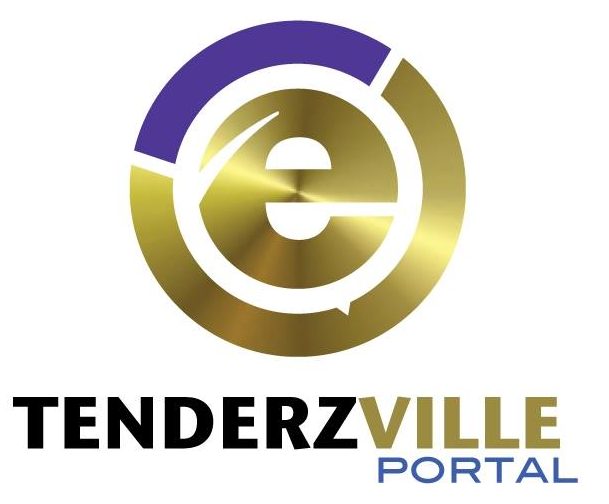Simplifying Supply Chain Management in Kenya: 7 Strategies for Success
Welcome to the world of supply chain management in Kenya, where efficiency is key to success. In this fast-paced and ever-evolving industry, staying ahead of the game is not only a priority but a necessity.
Whether you’re a small business or a large corporation, simplifying supply chain management is crucial for streamlining operations and boosting profitability. In this article, we will explore seven proven strategies to achieve just that.
From optimizing inventory management to leveraging technology, these strategies are designed to help you unlock the full potential of your supply chain. We’ll delve into the best practices for choosing reliable suppliers, implementing robust logistics systems, and improving communication and collaboration.
By implementing these strategies, you will be able to streamline your supply chain, reduce costs, and increase customer satisfaction. Join us as we dive into the world of supply chain management in Kenya and discover the key to success in this dynamic and competitive market.
Ready to revolutionize your supply chain? Let’s get started!
Challenges faced in supply chain management in Kenya
Kenya, a country known for its vibrant economy and entrepreneurial spirit, has its own unique challenges when it comes to supply chain management. One of the key challenges is the lack of infrastructure, particularly in rural areas. This can lead to delays in transportation and logistics, resulting in inefficiencies and increased costs.
Another challenge is the volatility of the market. Kenya is heavily dependent on imports, and fluctuations in exchange rates and trade policies can significantly impact supply chain operations. Additionally, political instability and security concerns can disrupt the flow of goods and services.
Furthermore, managing inventory effectively can be a challenge in Kenya. With limited storage facilities and unpredictable demand patterns, businesses need to find innovative ways to optimize their inventory management processes.
Despite these challenges, there are strategies that businesses can employ to simplify their supply chain management and overcome these hurdles. Let’s explore them in detail.
Importance of simplifying supply chain management
Efficient procurement processes are the foundation of a successful supply chain. By streamlining your procurement processes, you can ensure timely acquisition of goods and services, reduce costs, and enhance supplier relationships.
One way to streamline procurement is by implementing an automated system that enables seamless communication with suppliers. This system can automate the purchase order process, track supplier performance, and provide real-time visibility into inventory levels.
Additionally, conducting regular supplier evaluations and consolidating suppliers can help optimize procurement. By choosing reliable and trustworthy suppliers, you can minimize the risk of disruptions in the supply chain and improve overall efficiency.
Strategy 1: Streamlining procurement processes
Effective inventory management is essential for maintaining the right balance between supply and demand. In Kenya, where storage facilities may be limited, it becomes even more critical to have a robust inventory management system in place.
By leveraging technology, businesses can implement inventory management systems that provide real-time visibility into stock levels, automate reorder points, and enable efficient demand forecasting. This allows businesses to optimize inventory levels, reduce carrying costs, and avoid stockouts or overstock situations.
Furthermore, implementing just-in-time (JIT) inventory management practices can help minimize inventory holding costs and improve overall efficiency. By receiving goods only when they are needed, businesses can reduce storage requirements and minimize the risk of obsolete inventory.
Strategy 2: Implementing a robust inventory management system
Effective communication and collaboration with suppliers are vital for a successful supply chain. By establishing clear lines of communication and fostering strong relationships with suppliers, businesses can enhance efficiency, reduce lead times, and improve overall customer satisfaction.
One way to enhance communication is by implementing supplier portals or collaboration platforms. These platforms enable real-time communication, document sharing, and performance tracking, fostering transparency and accountability in the supply chain.
Regular meetings and performance reviews with suppliers are also essential for maintaining open lines of communication and addressing any issues or concerns promptly. By working closely with suppliers, businesses can identify areas for improvement and implement strategies to enhance efficiency and quality.
Strategy 3: Enhancing communication and collaboration with suppliers
Efficient transportation and logistics are crucial for ensuring timely delivery of goods and minimizing costs. In Kenya, where infrastructure may be a challenge, businesses need to find innovative ways to optimize their transportation and logistics processes.
One strategy is to establish strategic partnerships with reliable logistics providers. By outsourcing transportation and logistics to trusted partners, businesses can leverage their expertise and resources while focusing on their core competencies.
Another strategy is to optimize route planning and load consolidation. By analyzing delivery routes, businesses can identify opportunities for optimization, such as reducing empty miles and maximizing truck capacity. This can lead to cost savings and improved delivery times.
Furthermore, adopting technology solutions such as GPS tracking and route optimization software can provide real-time visibility into shipments and enable proactive management of transportation and logistics operations.
Suppliers, Join our early access program for tendering and also submit your company portfolio to our supplier directory
Supplier Directory

Strategy 4: Optimizing transportation and logistics
Technology plays a crucial role in simplifying supply chain management. By adopting the right technology solutions, businesses can automate processes, improve visibility, and enhance overall efficiency.
One technology solution that businesses can leverage is a supply chain management software. This software enables businesses to manage inventory, track shipments, and analyze data in real-time. It provides valuable insights into supply chain performance and helps identify areas for improvement.
Additionally, businesses can leverage advanced analytics and predictive modeling to optimize demand forecasting, improve inventory management, and reduce costs. By analyzing historical data and market trends, businesses can make informed decisions and proactively address supply chain challenges.
Visit our Supply Chain Tools page to see examples of tools we have created to show how we can apply technology in supply chain (Supply Chain Tools )
Strategy 5: Adopting technology solutions for supply chain management
Building strong relationships with key stakeholders, such as customers, employees, and government agencies, is essential for a successful supply chain.
By understanding customer needs and preferences, businesses can align their supply chain processes to deliver value and enhance customer satisfaction. This can be achieved through regular communication, feedback collection, and proactive problem-solving.
Furthermore, investing in employee training and development is crucial for building a skilled and motivated workforce. Well-trained employees can contribute to improved efficiency, better decision-making, and enhanced collaboration within the supply chain.
Lastly, maintaining positive relationships with government agencies is essential for navigating regulatory requirements and ensuring compliance. By staying up-to-date with regulations and engaging in proactive communication with relevant authorities, businesses can minimize disruptions and avoid penalties.
Strategy 6: Building strong relationships with key stakeholders
Continuous improvement and monitoring are key to ensuring the long-term success of your supply chain. By regularly evaluating performance, identifying areas for improvement, and implementing corrective actions, businesses can stay ahead of the competition and adapt to changing market dynamics.
One way to monitor supply chain performance is by establishing key performance indicators (KPIs) and regularly tracking and analyzing relevant metrics. This enables businesses to identify bottlenecks, measure progress, and make data-driven decisions.
Additionally, conducting regular audits and assessments can help identify potential risks and vulnerabilities in the supply chain. By proactively addressing these risks, businesses can minimize disruptions and ensure the smooth flow of goods and services.
Continuous improvement should also involve seeking feedback from customers, suppliers, and employees. By listening to their suggestions and incorporating them into your supply chain processes, businesses can drive innovation, improve efficiency, and enhance overall performance.
Strategy 7: Continuous improvement and monitoring in supply chain management
In conclusion, simplifying supply chain management in Kenya is essential for streamlining operations, reducing costs, and enhancing customer satisfaction. By implementing strategies such as streamlining procurement processes, optimizing inventory management, enhancing communication and collaboration with suppliers, and adopting technology solutions, businesses can unlock the full potential of their supply chains.
Building strong relationships with key stakeholders, optimizing transportation and logistics, and continuously monitoring and improving supply chain performance are also critical for success in this dynamic and competitive market.
Remember, supply chain management is not a one-time effort but an ongoing process. By continuously evaluating and adapting your supply chain strategies, you can stay ahead of the curve and achieve sustainable success in the Kenyan market.
So, are you ready to revolutionize your supply chain? Implement these strategies and watch your business thrive in the world of supply chain management in Kenya.
Conclusion
Efficient inventory management is essential for a streamlined supply chain. By accurately forecasting demand and maintaining optimal inventory levels, you can reduce carrying costs while ensuring on-time deliveries. Start by analyzing historical data to identify patterns and trends. This will help you make informed decisions regarding inventory levels and prevent stockouts or overstocking.
Implementing an inventory management system can further enhance visibility and control over your inventory. This system can automate processes such as order placement, tracking, and replenishment, saving you time and reducing the risk of human error. By optimizing your inventory management, you can minimize costs, improve cash flow, and provide better customer service.



